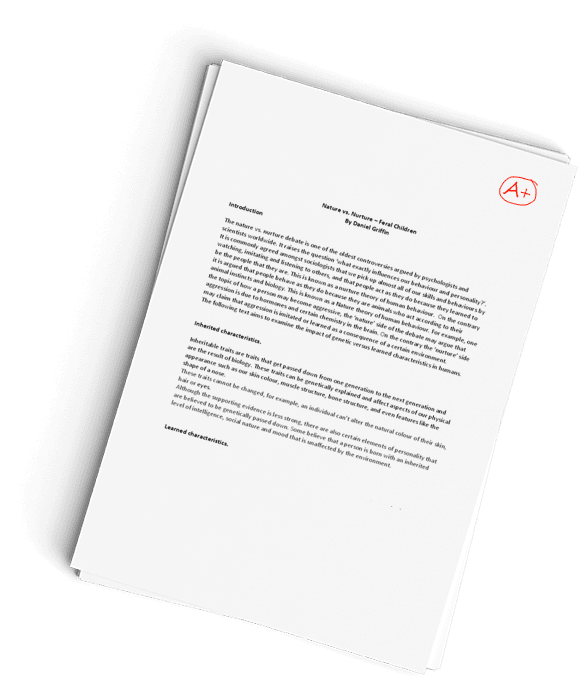Purdue University The Expansion and Integration in the Health Sector Discussion
Question Description
write 400 words for the written assignment
write 200 words for each of the 3 case studies
TOTAL = 1000 words
NO PLAGIARISM!!
MODULE 04 WRITTEN ASSIGNMENT – EXPANSION OF HOSPITAL SERVICES
The past decade has seen profound changes in how the hospital industry has organized itself, including the rising importance of hospital systems. Theoretically, system consolidation can have positive effects from improved efficiency and quality or negative effects from greater market power. Furthermore, these developments have led to hospital bankruptcies and closings, reductions in bed complements, and mergers and takeovers, as well as the formation of an ever-increasing number of hospital networks.
In this module, you studied how vertical integration can impact a health care system. In your opinion, should hospitals expand into other services in order to strengthen their financial standing, or is this a method of “self-referral,” reaching out for income-producing areas that are outside the realm of the hospital’s mission statement?
In a 1-2 page paper, written in APA format, address the following:
- Explain how vertical integration can impact a health care system.
- Explain how a hospital’s expansion into other services can strengthen their financial standing.
- Explain how a hospital’s expansion into other services can have a negative impact on a system by operating outside the scope of the hospital’s mission statement.
MODULE 04 CASE SCENARIO – OUTPATIENT SURGERY?
Technology and reimbursement patterns have increased the amount of surgery performed on an ambulatory basis. Hospitals all over the country are experiencing a rise in the number of surgical patients who come into the hospital and go home on the same day; cases that previously required at least an overnight stay in the hospital. The move to outpatient treatment can significantly affect a hospital’s use of beds and its overall organization. However, the move to outpatient care also poses some risks, especially to patients with difficult medical histories. The move from inpatient to outpatient care is driven by cost containment, as well as by new technologies. However, there are risks to care provided in the ambulatory setting. For example, advanced age (especially older than 70 years) is associated with increased hospital stay and perioperative morbidity and mortality. Additionally, the type of surgery is important in the risk assessment.
In the following three case scenarios, determine if the patient has an increased risk for surgical complications based on their current health status and medical history. Write a 1-2 paragraph response for each scenario, and determine the following:
- Does the patient’s medical history pose a potential risk for complications prior/post surgery? Explain your reasoning.
- Based on the patient’s current health status and their medical history, should they receive surgery or be evaluated and treated outside of the ambulatory care setting? Explain your reasoning.
Case Scenario 1:
|
Mr. Rogers is a 51-year old male. During his pre-operative examination, he tells the nurse, “I have an ache in my right foot”. He offers an explanation, suggesting, “I must have stepped on something or twisted my ankle. Maybe I got bitten by a bug when I was outside yesterday”. The nurse notes that the patient’s ankle is reddened, slightly swollen, and warm to the touch. However, his temperature is within normal limits. Mr. Roger’s ankle is x-rayed and there is no fracture noted. He has full range-of-motion of his right ankle. Mr. Rogers has a preexisting medical condition of gout. He is scheduled for outpatient surgery on his thyroid. |
Case Scenario 2:
|
Mr. Sanders is a 61-year old male who presents with nausea and has been vomiting for two days. He is also experiencing mental confusion. His blood glucose is 796 mg/dL. He is a newly diagnosed diabetic and has not been getting medical treatment. Intravenous regular insulin is administered to Mr. Sanders in order to bring his blood glucose level down to a normal level. Further tests show that his Hemoglobin A1C is 10.3%. Mr. Sanders has a preexisting medical condition of coronary heart disease and hypertension. He is scheduled for outpatient surgery on his thyroid. |
Case Scenario 3:
|
Mrs. Miller is an 88-year old woman who presents with nausea, vomiting, and severe abdominal pain. Further tests reveal that her white blood cell count is 13,000/mm3. Her physical examination reveals that her abdomen is distended and very tender to the touch. Her doctor suspects that she has acute pancreatitis. Mrs. Miller has a preexisting medical condition of heart failure and gastroesophageal reflux disease (GERD). She is also scheduled for outpatient surgery on her thyroid. |
Have a similar assignment? "Place an order for your assignment and have exceptional work written by our team of experts, guaranteeing you A results."








